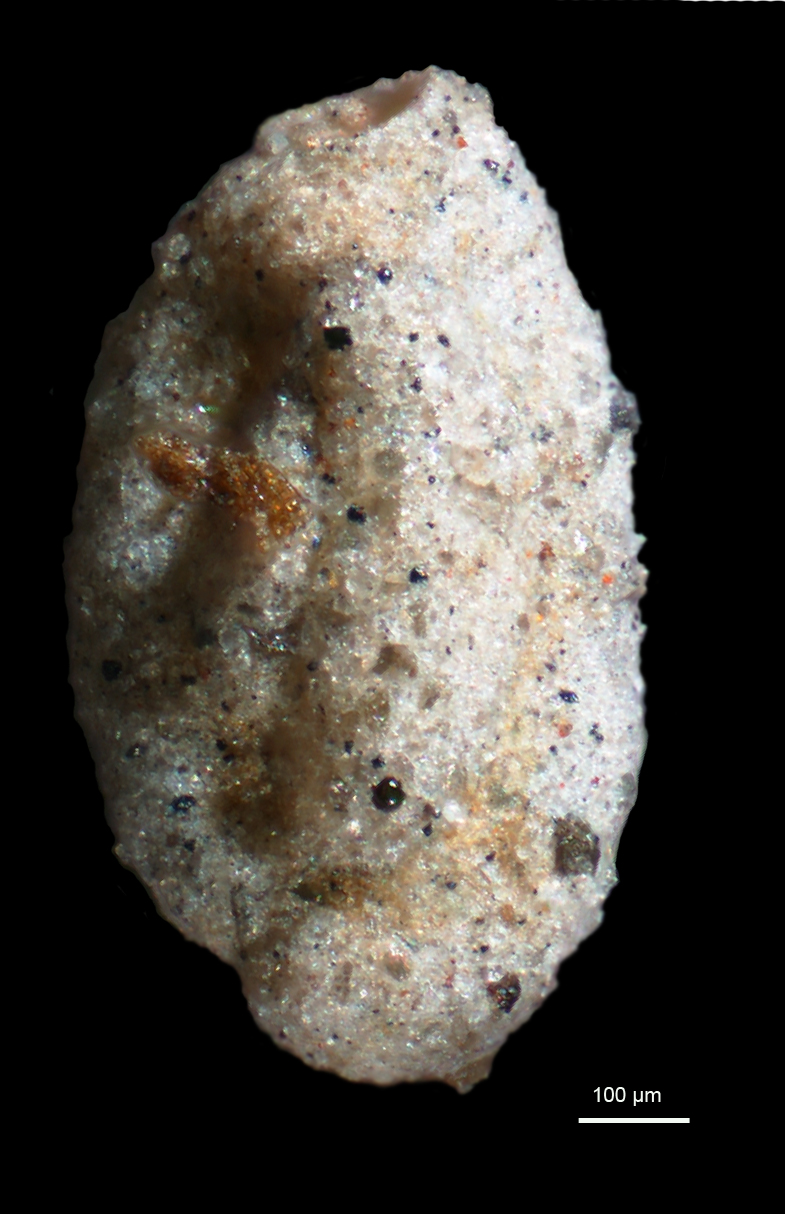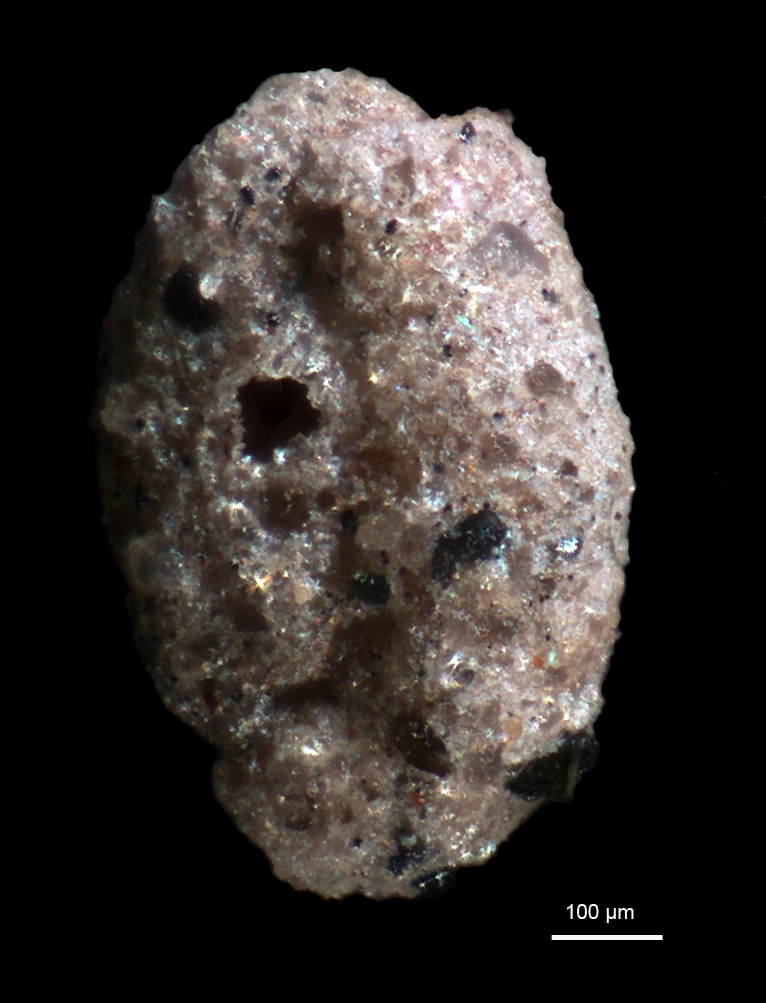Genus Miliammina
Miliammina Heron-Allen and Earland, 1930, emended Loeblich and Tappan, 1955
Miliammina Heron-Allen and Earland, 1930, emended Loeblich and Tappan, 1955, p. 41.
Description emended: Test free, chambers arranged in quinqueloculine plan; wall siliceous, insoluble in hydrochloric acid, composed of minute mineral grains in an excess of siliceous cement, smoothly finished or polished in appearance, more rarely roughened ; aperture terminal, with tooth formed by the infolding of wall.
Remarks: Heron-Allen and Earland included forms in Miliammina that have either quinqueloculine or triloculine chamber arrangement. Loeblich and Tappan emended it to include only those that are quinqueloculine.
Phylogenetic and ultrastructure studies of genus Miliammina showed that this agglutinated genus is a sister group to the porcelaneous quinqueloculine genera (Hadbura et al., 2006). These genera are now placed within the miliolids, under the new Class Tubothalamea (Pawlowski et al., 2013).
Miliammina fusca (Brady 1870)
Quinqueloculina fusca Brady, 1870, in Brady and Robertson, p. 286, pl. 11, fig. 2; Cushman and Todd, 1947, p. 5, pl. 1, fig. 17; Cushman, 1948, p. 33, pl. 3, figs. 16, 17.
Miliammina fusca (Brady, 1870) Murray, 2006, p. 21, pl. 3, figs. 1-6; Patterson, 1990a, p. 240, pl. 1, fig. 4; McGann, 2007, p. 64, pl. 9, fig. K.
Description: Test elongate ovate; narrow chambers one-half coil in length, quinqueloculine arrangement; wall thick, very finely agglutinated; aperture at end of chamber, large and conspicuous, equal in size to transverse section of chamber.
Remarks: Miliammina fusca is unusual as a miliod with agglutinated test. It is cosmopolitan and has been record as dominating mesohaline and dysoxic habitats such as low salt marshes, mangrove swamps and brackish estuaries (e.g. Tyszka, 1997; Sen Gupta, 1999; Murray, 2006). These environments are stressful on species producing calcareous tests and would favor those taxa that produce agglutinated tests.
Distribution: In this study of Puget Sound, M. fusca is not common because samples are collected from water depth greater than 3 m.


